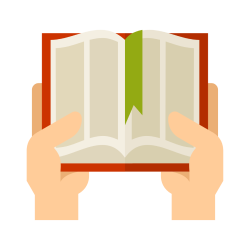
Hiragana VS Katakana: What’s the Difference?
Hiragana VS Katakana: What’s the Difference?
Hiragana and katakana are the two key systems in Japanese writing. It is two syllabaries in Japanese. Hiragana is used to form the grammar of the sentence, it’s used on its own or in conjunction with kanji to form words, and katakana is used primarily to signal to the reader that a word is foreign, adapted to Japanese from another language. It’s also used for emphasis and onomatopoeia. e.g. coffee, table, and so forth.
Hiragana Chart
Hiragana is the main syllabary containing a total of 46 base syllables, some of which can be altered slightly or combined to create the 100 or so phonetics in the language. The base syllables are shown in the table below. You should note the structure of the table as this will be important when we start conjugating verbs.
In Japanese, syllables are organized in the form of a table (5 x 10). This table is called gojūon-zu (literally means table of 50 sounds). To describe these sounds, Hiragana and Katakana alphabets are used.
Letters い, う and え appear more than once in the table. These 5 duplicates (gray-colored) are usually skipped or ignored. Another syllable ん is included. It doesn't belong to any row or column.
In total, 46 letters (45+1) are counted as gojūon (50 sounds).
Gojūon 【五十音】
The Japanese alphabet is broken down into rows and columns, as pictured in the chart above. The vertical column marks the vowel, and the horizontal row marks the consonant sound. Besides the singular vowel sounds, all Japanese characters will have a consonant and vowel, except for ん (“n” or “m”).
Hiragana Chart
Hiragana is the main syllabary containing a total of 46 base syllables, some of which can be altered slightly or combined to create the 100 or so phonetics in the language. The base syllables are shown in the table below. You should note the structure of the table as this will be important when we start conjugating verbs.
In Japanese, syllables are organized in the form of a table (5 x 10). This table is called gojūon-zu (literally means table of 50 sounds). To describe these sounds, Hiragana and Katakana alphabets are used.
Letters い, う and え appear more than once in the table. These 5 duplicates (gray-colored) are usually skipped or ignored. Another syllable ん is included. It doesn't belong to any row or column.
In total, 46 letters (45+1) are counted as gojūon (50 sounds).
Gojūon 【五十音】
| a | i | u | e | o | |
| Vowels | あ a |
い i |
う u |
え e |
お o |
| k | か ka |
き ki |
く ku |
け ke |
こ ko |
| s | さ sa |
し shi |
す su |
せ se |
そ so |
| t | た ta |
ち chi |
つ tsu |
て te |
と to |
| n | な na |
に ni |
ぬ nu |
ね ne |
の no |
| h | は ha |
ひ hi |
ふ fu |
へ he |
ほ ho |
| m | ま ma |
み mi |
む mu |
め me |
も mo |
| y | や ya |
い (i) |
ゆ yu |
え (e) |
よ yo |
| r | ら ra |
り ri |
る ru |
れ re |
ろ ro |
| w | わ wa |
い (i) |
う (u) |
え (e) |
を o |
The Japanese alphabet is broken down into rows and columns, as pictured in the chart above. The vertical column marks the vowel, and the horizontal row marks the consonant sound. Besides the singular vowel sounds, all Japanese characters will have a consonant and vowel, except for ん (“n” or “m”).